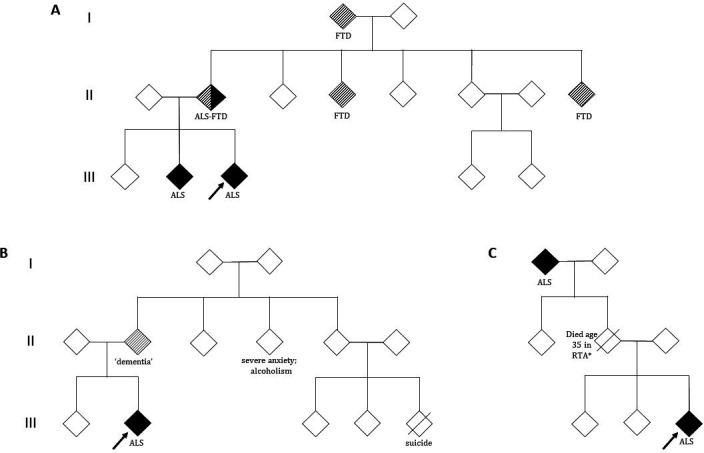Figure 2.

Patient pedigrees. Index patient shown by arrow; white symbols, unaffected individuals; diagonal line, deceased. (A) Pedigree showing an autosomal dominant inheritance of ALS. C9ORF72 hexanucleotide repeat expansion pedigrees may contain cases of FTD, ALS or mixed ALS–FTD independently within the same lineage. (B) The history of dementia in a parent must be explored further in this family, with relevance of this dependent on how suggestive this case is of FTD(for example, prominent behavioural changes). Other neuropsychiatric conditions, although not predictive in isolation, may also feature within an ALS kindred (particularly in the context of the C9ORF72 hexanucleotide repeat expansion). (C) The inheritance pattern may be obscured by the early death of a parent (*eg, RTA, road traffic accident) and the disease appears to skip a generation. There are more complex issues around variable penetrance to consider, including non-paternity, and it is also possible for an asymptomatic carrier parent to have a child who dies of ALS before they themselves develop symptoms. ALS, amyotrophic lateral sclerosis; FTD, frontotemporal dementia.
